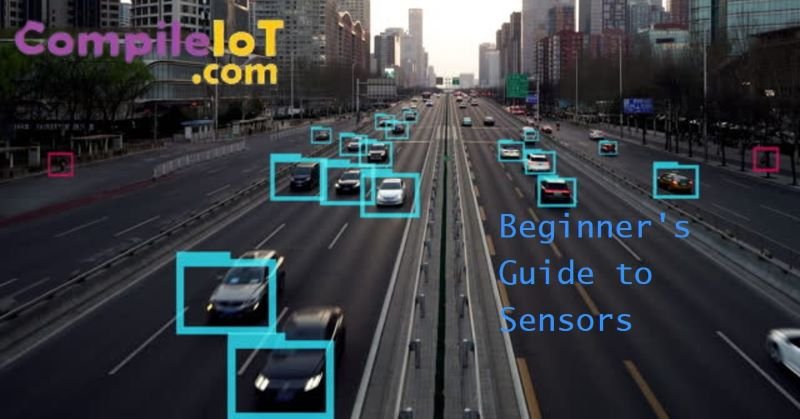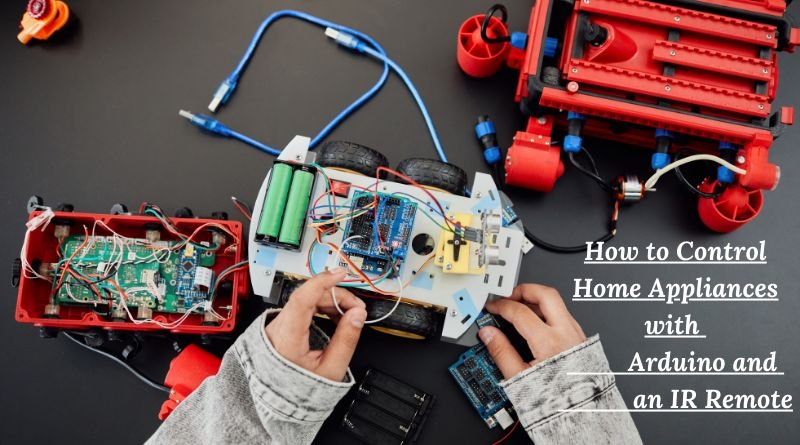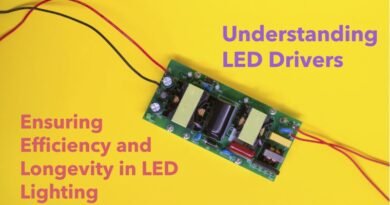Sensor Basics: A Beginner’s Overview
In modern technology, sensors play an indispensable role in serving as the sensory organs of electronic systems. They serve various functions, from measuring temperature and humidity to detecting motion and capturing images. Sensors are ubiquitous in our daily lives, often operating unnoticed, yet driving important functions in devices and systems across various industries. Let’s embark on a journey through the expansive landscape of sensors, exploring their types, applications, and significance.
What is Sensor?
A sensor is a device that detects and measures physical or chemical quantities and converts them into electrical signals. These signals can then be processed and used to provide information or control various systems. Sensors are the backbone of modern technology, playing a crucial role in everything from smartphones to automobiles.
Types of Sensors
Different types of sensors are available in the market. We will talk about some of the most common types of sensors:
Temperature Sensors
Temperature sensors are designed to measure the level of heat present in an environment or an object. They find applications in industries ranging from HVAC systems and automotive engines to medical devices and consumer electronics. Thermocouples, resistance temperature detectors (RTDs), and thermistors are common types of temperature sensors, each offering unique advantages in terms of accuracy, response time, and temperature range.
Humidity Sensors
Humidity sensors, also known as hygrometers, gauge the moisture content in the air or gases. They are crucial in controlling environmental conditions in applications such as climate control systems, greenhouses, and industrial processes. Capacitive, resistive and thermal conductivity-based humidity sensors are widely used, providing precise measurements for various humidity levels.
Temperature and Humidity Sensors
Combining the functionalities of temperature and humidity sensors, these devices offer comprehensive environmental monitoring capabilities. They are extensively employed in weather stations, storage facilities and HVAC systems to ensure optimal conditions for human comfort, product preservation, and process efficiency.
Hall Current Sensors
Hall effect sensors detect the presence of magnetic fields and are commonly utilized in current measurement applications. They play a vital role in electric vehicle propulsion systems, power distribution networks, and industrial motor control, enabling precise monitoring and control of electrical currents.
Acceleration Sensors
Acceleration sensors, or accelerometers, measure the rate of change of velocity of an object. They are integral components in smartphones, gaming controllers, automotive airbag systems, and aerospace navigation systems, providing critical data for motion detection, vibration analysis, and inertial navigation.
Pressure Sensors
Pressure sensors quantify the force applied perpendicular to a surface per unit area. They are employed in diverse applications such as tire pressure monitoring systems, industrial automation, and medical devices like blood pressure monitors. Capacitive, piezoelectric, and strain gauge-based pressure sensors offer high accuracy and reliability across different pressure ranges.
Barometric Pressure Sensors
Specialized pressure sensors calibrated to measure atmospheric pressure are known as barometric pressure sensors. They are utilized in weather forecasting, altitude measurement, and aviation instrumentation, enabling accurate determination of altitude and weather patterns.
Gas Sensors
Gas sensors detect the presence of specific gases in the environment, playing a crucial role in air quality monitoring, industrial safety, and emission control systems. Types of gas sensors include electrochemical, semiconductor, and infrared sensors, each tailored to detect different gases with high sensitivity and selectivity.
Capacitance Touch Sensor ICs
Capacitive touch sensor integrated circuits enable touch-sensitive interfaces in electronic devices such as smartphones, tablets, and interactive displays. They detect changes in capacitance caused by human touch, offering intuitive and responsive user interaction.
Hall Effect Switches and Linear Hall Sensors
Hall effect switches detect the presence of magnetic fields and are utilized in applications like position sensing, proximity detection, and speed measurement. Linear Hall sensors provide precise linear output proportional to the strength of the magnetic field, facilitating accurate position and motion sensing in automotive, industrial, and consumer electronics.
Optical Encoders
Optical encoders utilize light-based detection mechanisms to translate linear or rotary motion into digital signals. They are essential in robotics, CNC machines, and digital control systems, enabling precise position and velocity feedback for motion control and navigation.
Sensor Accessories
Accessories such as sensor cables and connectors ensure reliable connectivity and installation of sensors in various systems. They play a critical role in maintaining signal integrity and protection against environmental factors such as moisture, heat, and electromagnetic interference.
Ambient Light Sensors
Ambient light sensors measure the intensity of light in the surrounding environment and are utilized in display brightness adjustment, automatic lighting systems, and energy-efficient street lighting. They enable devices to adapt their operation based on ambient lighting conditions, enhancing user comfort and energy savings.
Distance Sensors
Distance sensors, including ultrasonic, laser, and infrared sensors, measure the distance between the sensor and an object. They are employed in robotics, automation, and automotive applications for obstacle detection, object positioning, and navigation tasks.
NTC and PTC Thermistors
Thermistors are temperature-sensitive resistors with negative temperature coefficient (NTC) or positive temperature coefficient (PTC) characteristics. NTC thermistors are widely used for temperature measurement and compensation, while PTC thermistors find applications in overcurrent protection, motor starting, and temperature control systems.
Motion Sensors
Motion sensors detect movement in their vicinity and are integral components in security systems, lighting controls, and gaming consoles. Passive infrared (PIR), microwave, and ultrasonic motion sensors offer reliable detection of human presence and motion, enhancing safety and energy efficiency in various environments.
Pyroelectric Infrared Sensors and ICs
Pyroelectric infrared sensors detect changes in infrared radiation emitted by objects. They are employed in motion detection, occupancy sensing, and security systems, offering high sensitivity and immunity to ambient temperature fluctuations.
Specialized Sensors
Specialized sensors cater to niche applications, ranging from biomedical sensing and environmental monitoring to industrial automation and space exploration. Examples include biosensors, radiation sensors, and gas chromatography detectors, each tailored to specific measurement requirements and environmental conditions.
Image Sensors
Image sensors capture visual information and are ubiquitous in digital cameras, smartphones, and surveillance systems. Complementary metal-oxide-semiconductor (CMOS) and charge-coupled device (CCD) sensors convert light into electronic signals, enabling the capture of still images and videos with high resolution and fidelity.
Proximity Sensor ICs
Proximity sensor integrated circuits detect the presence or absence of nearby objects without physical contact. They are utilized in smartphones, robotics, and automotive systems for object detection, gesture recognition, and touchless control applications.
Color Sensors
Color sensors measure the spectral components of light to determine the color of objects. They find applications in color matching, printing quality control, and industrial sorting processes, ensuring accurate and consistent color reproduction across various materials and products.
Solar Cells
Solar cells, also known as photovoltaic cells, convert sunlight into electrical energy. They are the cornerstone of solar power systems, providing sustainable and renewable energy generation for residential, commercial, and industrial applications.
Sensor Modules
Sensor modules integrate sensors with supporting circuitry and interfaces, simplifying their integration into electronic systems. They are available for a wide range of sensing applications, offering plug-and-play functionality and versatility in design and implementation.
Applications of Sensors
Sensors have a wide range of applications across various industries. Here are some examples:
- Automotive Industry : Sensors play a crucial role in the automotive industry, enabling features such as anti-lock braking systems, airbag deployment, and tire pressure monitoring. They help improve safety, efficiency, and overall vehicle performance.
- Healthcare : In healthcare, sensors are used for monitoring vital signs, such as heart rate, blood pressure, and oxygen levels. They also play a vital role in medical imaging, diagnostics, and drug delivery systems.
- Environmental Monitoring : Sensors are used to monitor and measure various environmental parameters, including air quality, temperature, humidity, and pollution levels. This data helps in understanding and addressing environmental issues.
- Smart Homes : Sensors are an integral part of smart home systems, enabling features such as automated lighting, temperature control, and security monitoring. They make our homes more convenient, energy-efficient, and secure.
- Industrial Automation : Sensors are extensively used in industrial automation to monitor and control various processes. They help improve efficiency, productivity, and safety in industries such as manufacturing, logistics, and robotics.
Conclusion
In conclusion, sensors form the backbone of modern technology, enabling a myriad of functionalities across diverse industries and applications. From monitoring environmental parameters to facilitating human-machine interaction and energy harvesting, sensors continue to drive innovation and progress in the digital age, shaping the way we perceive and interact with the world around us.








